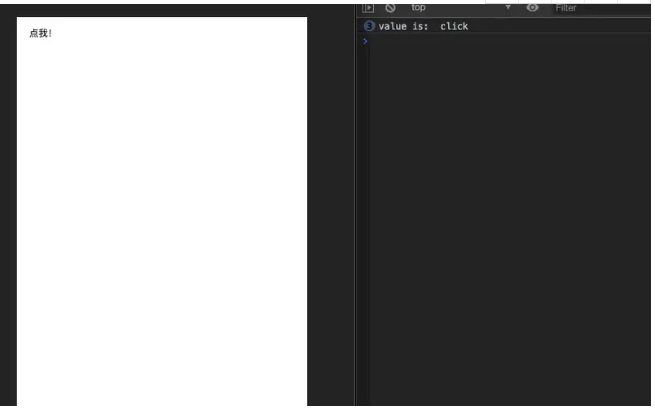基于vue-cli3+typescript的tsx开发模板搭建过程分享
项目创建
使用 vue-cli3+ 创建一个基于 ts 的模板:

vue-tsx-support
上一步中已经创建完了基于 ts 的 vue 模板,但是开发方式还是如同之前的 template 一样,只是将 script 中的 js 部分改成了 ts 来书写。接下来就将 模板(template) 方式改成 tsx 的方式,这里需要借助一个库 -- vue-tsx-support
首先安装 vue-tsx-support :
npm install vue-tsx-support --save # or yarn add vue-tsx-support
安装结束后,我们需要对我们的文件做点小改动,首先我们在主入口文件 main.ts 中引入:
npm install vue-tsx-support --save # or yarn add vue-tsx-support
然后删掉 src/shims-tsx.d.ts 文件,避免和 vue-tsx-support/enable-check 声明重复冲突。
最后在我们的 vue.config.js 文件里的 configureWebpack 属性下增加一项 resolve :
// vue.config.js
module.exports = {
// ...
configureWebpack: {
resolve: {
extensions: [".js", ".vue", ".json", ".ts", ".tsx"] // 加入ts 和 tsx
}
}
}
这样就可以了,接下来就可以开始开发了。 我们在 /components 下新建一个文件 button.tsx 。然后开始书写我们 tsx 风格的 vue 代码:
// components/button/button.tsx
import { Component, Prop } from "vue-property-decorator";
import * as tsc from "vue-tsx-support";
interface ButtonClick {
(value: string): void
}
interface ButtonProps {
text: string;
btnClick?: ButtonClick
}
@Component
export default class ZButton extends tsc.Component<ButtonProps> {
@Prop() text!: string;
public btnClick(value: string): void {
console.log("value is: ", value);
}
protected render() {
return (
<div>
<button onClick={() => this.btnClick("click")}>{this.text}</button>
</div>
)
}
}
这样我们就完成了一个简单的tsx组件了。 接下来我们去改写原来的 Home.vue 变成 Home.tsx :
// views/Home.tsx
import { Component, Vue } from "vue-property-decorator";
import { Component as tsc } from "vue-tsx-support";
import ZButton from "@/components/button/button.tsx";
@Component
export default class HomeContainer extends tsc<Vue> {
protected render() {
return <Zbutton text="点我!"></Zbutton>;
}
}
然后运行,能看到以下效果:

就这样完成了一个简单的 tsx风格的vue项目 了。
vue mixins
新建 mixins/index.ts ,在 index.ts 中写一个 vue mixin :
// mixins/index.ts
import { Vue, Component } from "vue-property-decorator";
// 这里一定要做个声明 不然在组件里使用的时候会报不存在的错误
// 要对应mixin中的属性和方法
declare module "vue/types/vue" {
interface Vue {
mixinText: string;
showMixinText(): void;
}
}
@Component
export default class MixinTest extends Vue {
public mixinText: string = "我是一个mixin";
public showMixinText() {
console.log(this.mixinText);
}
}
然后在 component/button/button.tsx 中使用:
// component/button/button.tsx
import { Component, Prop } from "vue-property-decorator";
import * as tsc from "vue-tsx-support";
import MixinTest from "@/mixins";
interface ButtonClick {
(value: string): void;
}
interface ButtonProps {
text: string;
btnClick?: ButtonClick;
}
// 在Component装饰器上注入mixin
@Component({
mixins: [MixinTest]
})
export default class ZButton extends tsc.Component<ButtonProps> {
@Prop() text!: string;
public btnClick(value: string): void {
console.log("value is: ", value);
}
// 点击事件中调用mixin的方法
protected render() {
return (
<div>
<button onClick={() => this.showMixinText()}>{this.text}</button>
</div>
);
}
}
vuex
vuex 的 ts 改造主要有两种方案,一种是基于 vuex-class 的方式,一种是基于 vue-module-decorators 的方式。 这里我使用的是 vuex-class 。
安装 vuex-class :
npm install vue-class --save #or yarn add vuex-class
新建一个system的module,针对system的store建立各自文件
- state.ts
- getter.ts
- mutation-type.ts
- mutation.ts
- action.ts
编写一个简单的例子,在vuex中存储user信息:
// store/modules/system/state.ts
interface SystemState {
user: Object
}
const state: SystemState = {
user: {}
}
export default state;
// store/modules/system/mutation-type.ts
interface SystemMutationType {
SET_USER_INFO: String;
}
const Mutation_Type: SystemMutationType = {
SET_USER_INFO: "SET_USER_INFO"
}
export default Mutation_Type;
// store/modules/system/mutation.ts
import type from "./mutation-type";
const mutation: any = {
[type.SET_USER_INFO as string](state: SystemState, user: Object) {
state.user = user;
}
}
export default mutation;
import type from "./mutation-type";
import { Commit } from "vuex";
export const cacheUser = (context: { commit: Commit }, user: Object) => {
context.commit(type.SET_USER_INFO as string, user);
}
然后建立一个system的入口文件 index.ts 将这些外抛出去:
// store/modules/system/index.ts
import state from "./state";
import mutations from "./mutation";
import * as actions from "./action";
import * as getters from "./getter";
export default {
namespaced: true,
state,
getters,
mutations,
actions
};
最后在store的入口文件处引用该module:
// store/index.ts
import Vue from "vue";
import Vuex from "vuex";
import system from "./modules/system";
Vue.use(Vuex);
export default new Vuex.Store({
modules: {
system
}
});
接着我们去组件 button.tsx 中使用:
// components/button/button.tsx
import { Component, Prop } from "vue-property-decorator";
import * as tsc from "vue-tsx-support";
// 引入store命名空间 方便使用某个模块
import { namespace } from "vuex-class";
// 通过namespace(module name)的方式使用某个模块的store
const systemStore = namespace("system");
@Component
export default class ZButton extends tsc.Component<ButtonProps> {
@Prop() text!: string;
// store使用state和action 其他getter和mutation类型
@systemStore.State("user") user!: Object;
@systemStore.Action("cacheUser") cacheUser: any;
public btnClick(value: string): void {
console.log("value is: ", value);
// 点击调用store的action方式存储user信息
// 而state中的user信息会同步 可通过vue-tools查看
this.cacheUser({ name: "张三", phone: "13333333333" });
}
// 点击事件中调用mixin的方法
protected render() {
return (
<div>
<button onClick={() => this.btnClick()}>{this.text}</button>
</div>
);
}
}
Tips: 基于typescript的vuex,还在想更优的一种方式。
Ps: 头一次写文章,难免有点紧张,如果问题,欢迎讨论。感谢~
最终的template在这里
总结
到此这篇关于搭建基于vue-cli3+typescript的tsx开发模板的文章就介绍到这了,更多相关vue typescript模板内容请搜索脚本之家以前的文章或继续浏览下面的相关文章希望大家以后多多支持脚本之家!
相关文章

element表格翻页第2页从1开始编号(后端从0开始分页)
这篇文章主要介绍了element表格翻页第2页从1开始编号(后端从0开始分页),文中通过示例代码介绍的非常详细,对大家的学习或者工作具有一定的参考学习价值,需要的朋友们下面随着小编来一起学习学习吧2019-12-12
Vue+Node实现商品列表的分页、排序、筛选,添加购物车功能详解
这篇文章主要介绍了Vue+Node实现商品列表的分页、排序、筛选,添加购物车功能,结合实例形式分析了vue.js前台商品分页、排序、筛选等功能及后台node.js处理技巧,需要的朋友可以参考下2019-12-12












最新评论